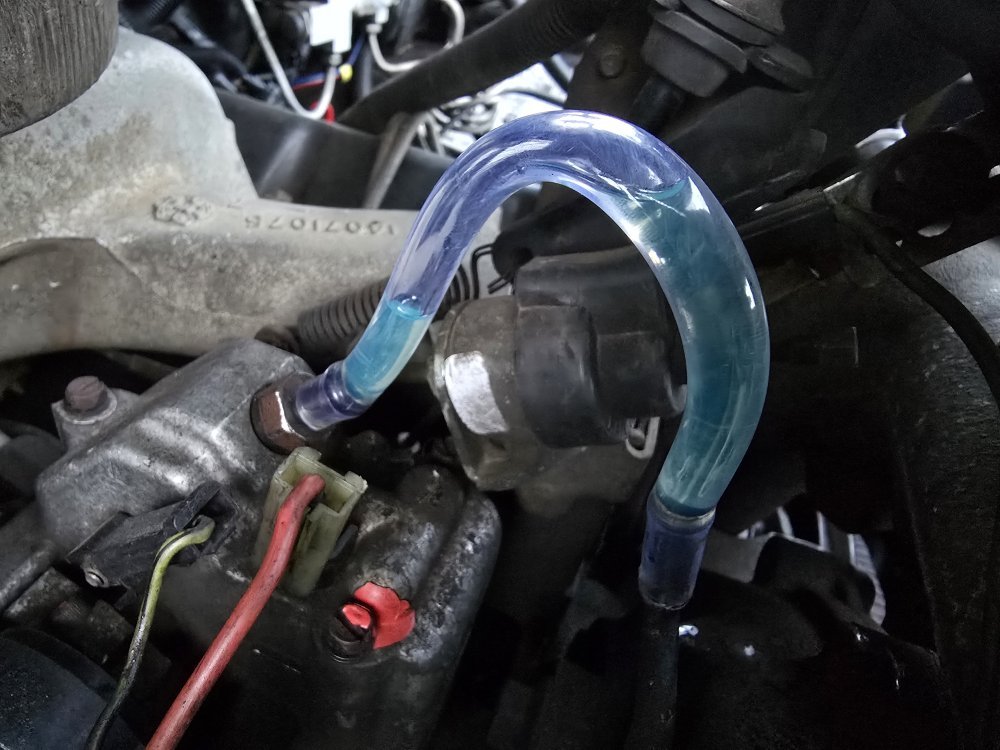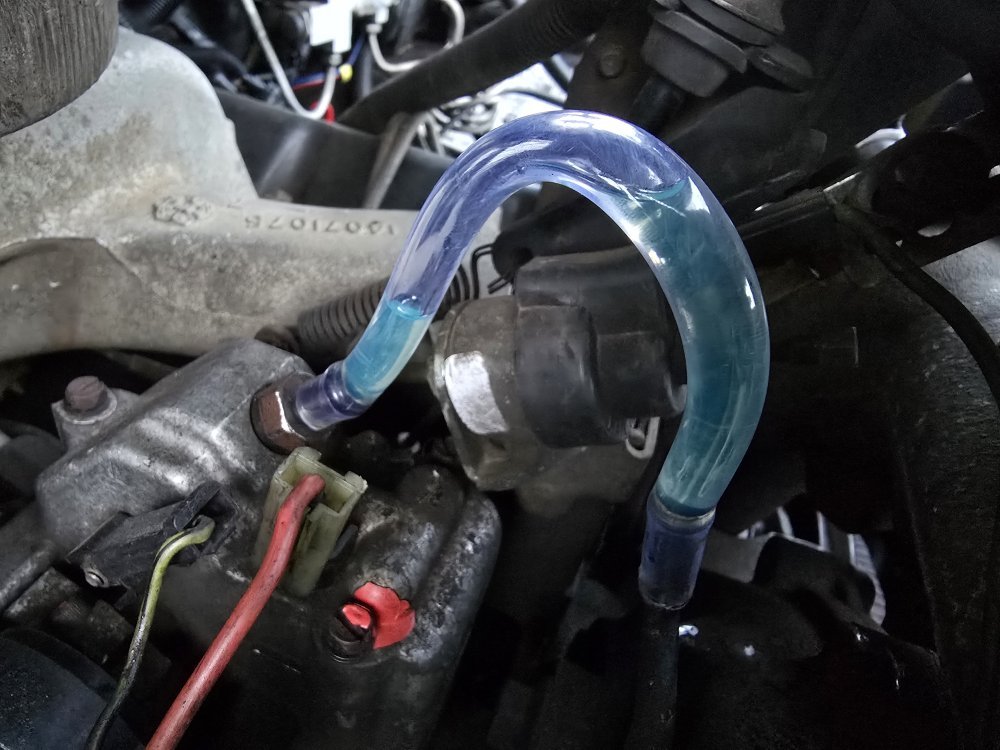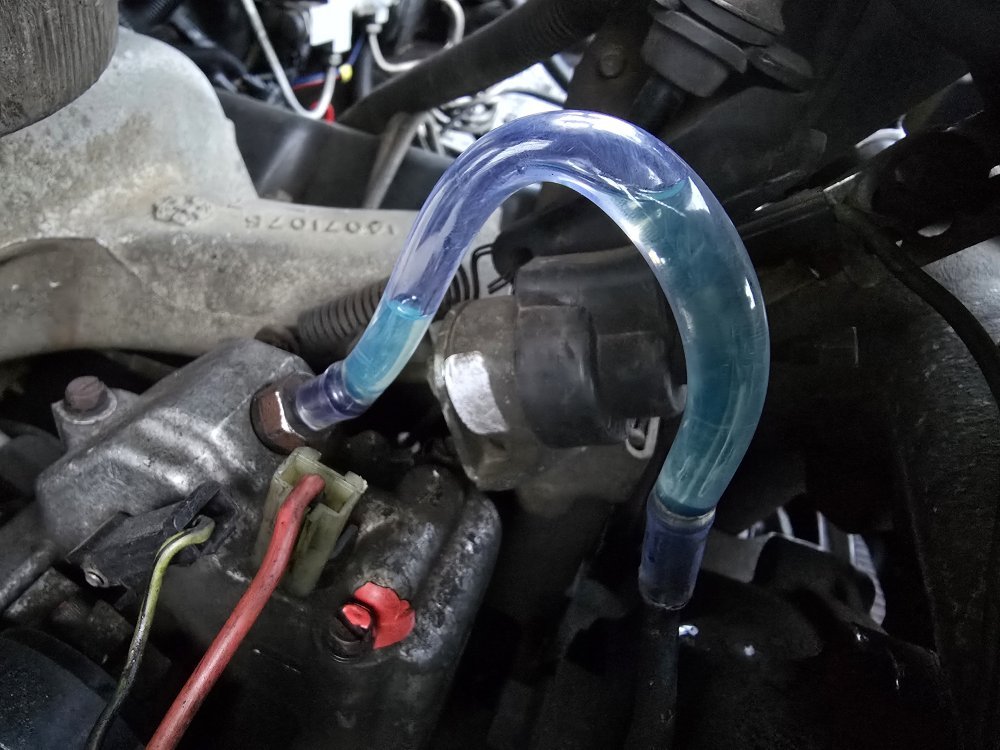so I suppose i can rule that out.
No. You have a PROBLEM. Start troubleshooting over and NOTHING gets a free pass. It's a year old and "used" at this time.
Do you have a fuel heater anywhere is this aftermarket filter setup? Or is it an OEM setup with a fuel heater at the filter?
I don’t remember the year it went away but remember my 88 they were gone.
Our 1988 6.2L NA 1/2 Ton Suburban had a mechanical lift pump.
if anyone could point me to a tutorial on how to replace it
Assure us you did the air test as noted several times here with the clear return line before you WASTE YOUR TIME DOING THIS!!! It's step #1 in the GM shop manual for a good reason! Bluntly your symptoms indicate air/lack of fuel to the IP. Been there done that got the T-Shirt.
Pull the intake and PLUG THE PORTS with paper towels. Keeps say the return line worm clamp etc. from falling into the engine.
Remove the oil fill tube.
Remove the ip lines from the IP - you don't need to remove them from the injectors. (Easier if you do but a time thing.)
Remove the two fuel lines supply/return. Good time to replace the rubber lines.
The e-clip on the throttle cable is easy to loose. I put a paper towel under the pump to try and catch it.
Rotate the engine backwards with a ratchet on an alternator pulley and remove the three ip gear bolts one at a time through the oil fill tube hole. Use a paper towel in the socket to make it tight on the bolt or magnetized socket.
Remove the three bolts holding the IP in.
Note the position of the locator pin on the IP going into the drive gear as the IP will likely turn as it's being wiggled out around the IP lines.
Reinstall new/rebuilt/patched up IP making sure the locator pin goes in the correct hole. If it goes in the wrong hole there are two (or one of the bolt holes) you can't get all three bolts in the drive gear.
Reinstall things...
Remove the easy to get to glow plugs. Spin the engine in 30 second bursts till you get a flammable mist out the glow plug holes. This has primed the fuel system. Reinstall the glow plugs and the engine should start.
Last edited:





